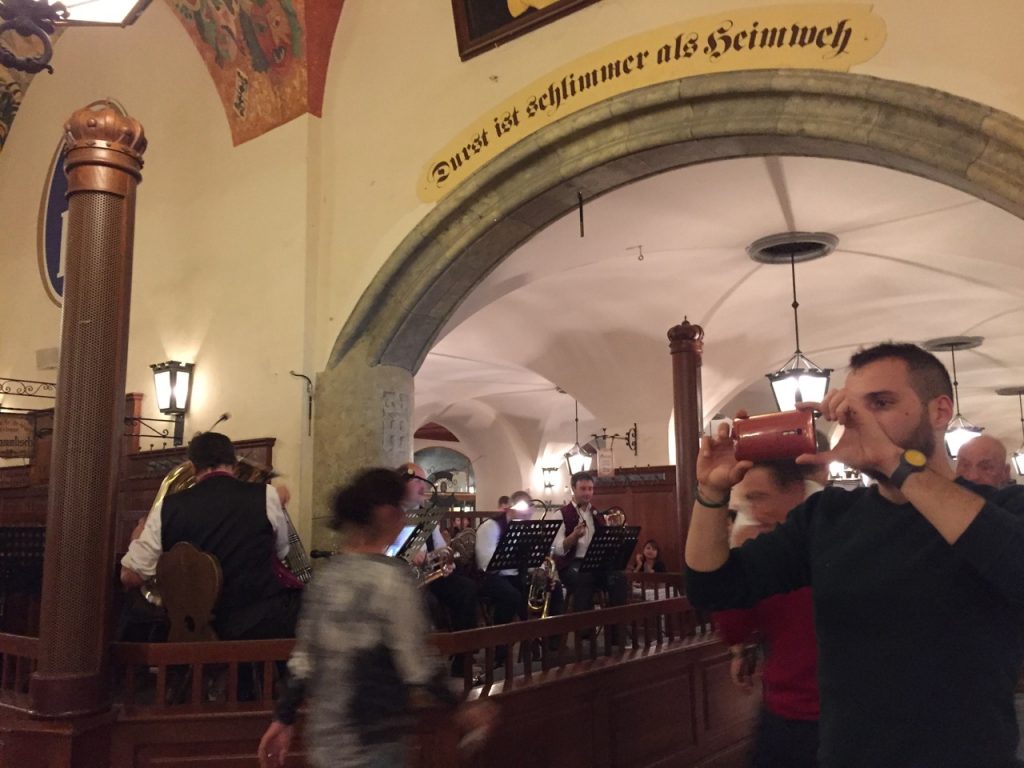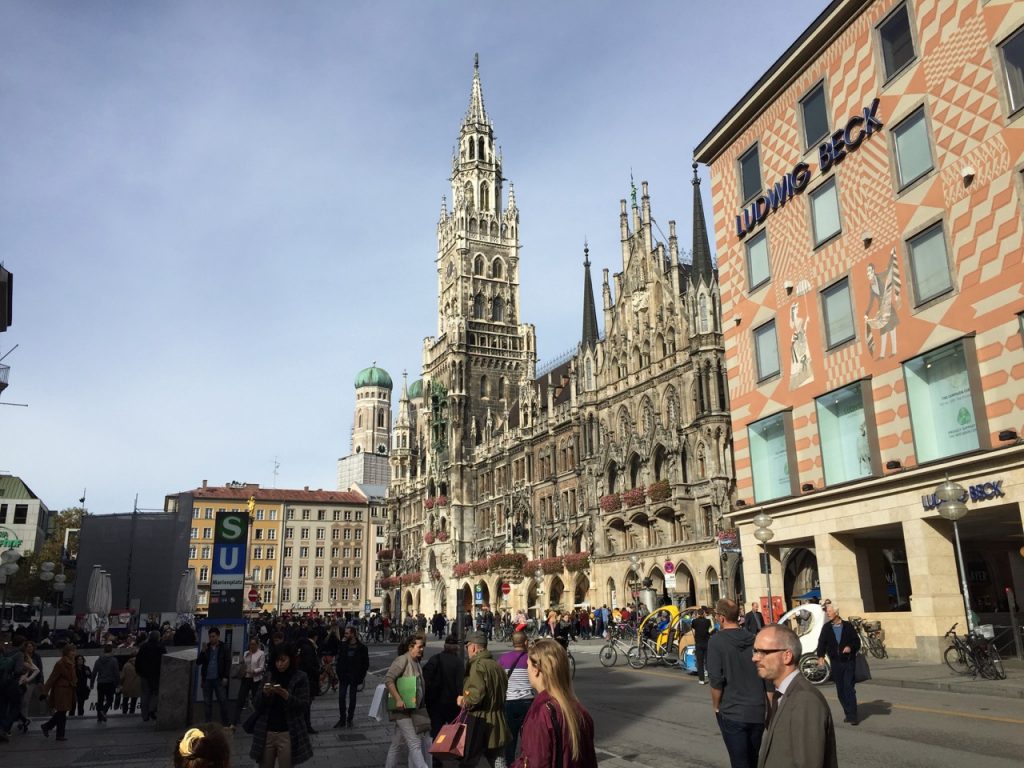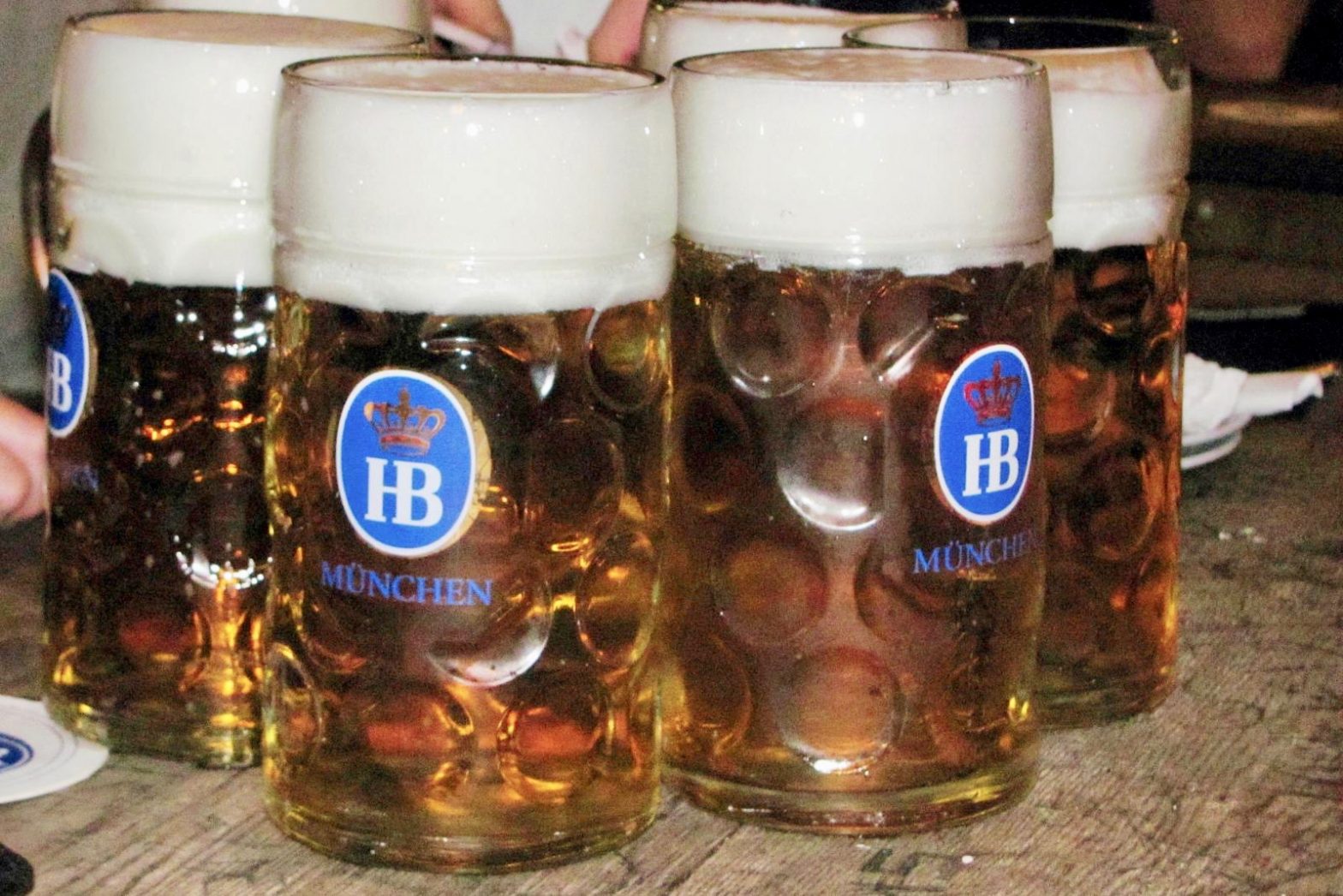Munich: the spiritual home of beer. The beer culture here is huge; there’s even a beer festival that sells upwards of 7 million litres of beer across a couple of weeks. You’ve probably heard of it…
But what if you’ve visiting Munich outside of Oktoberfest and want to sample some of the local tipple? Read on to find out about Bavarian beer and some of the drinking establishments you should visit!
What makes a Bavarian beer?
Back in 1516, Bavaria passed the Reinheitsgebot or beer purity law, which stated that the only ingredients that could be used to make beer were water, grain (barley or wheat) and hops. There were a number of reasons for this, mainly to stop price competition with bakers for wheat and rye so that the price of bread wouldn’t get too high, but also to stop the sale of lesser beers which tend to be full of additives (presumably Coors Light, Fosters and Carling, if they were around in the 1500s).
As a result of this, you’ll find that the majority of beers in Germany are all very similar and based on the Pilsner style – with Bavarian beer arguably the best of the bunch. You’ll also find that beer is served in the famous Masskrug, holding exactly one litre, making the humble pint seem totally inadequate by comparison.
The Masskrug is also often incorrectly referred to as a ‘stein’ by English speakers, and if you try to order one chances are they won’t know what you mean!
A stein is actually a different drinking vessel entirely, made of stone with designs carved into it’s sides and a metal lid. Walk into a beer hall and you’re likely to find rows of steins locked in place on shelves. These are actually the personal drinking vessels of that beer hall’s regulars. You can tell right away that this is a city where people take drinking beer very seriously indeed!
Ordering a beer is an extremely easy process, more so than other countries. Usually when you order a beer you’d be asked what kind, but in Munich, most beer halls are run by the breweries – and because of the purity laws, there are only a handful of different types on offer. That means when you say “ein Mass bitte” – literally translating as “one measure please” – you’ll be served up with a litre house beer – other types of beer are usually served in minuscule 500ml glasses.
So now you know what you’re getting and how to order it, where should you drink it? I travelled to Munich to answer this exact question…
Hofbräuhaus Munchen

The most famous of all the Bavarian breweries and a massive tourist attraction in itself. The Staatliches Hofbräuhaus in München was actually founded by the Duke of Bavaria, Wilhelm V, in 1589 and to this day is owned by the state of Bavaria. Not only that, he actually created may of the beer recipes himself!
Lets be clear, the Hofbräuhaus isn’t really where the locals go – but don’t let that detract from the experience, which is stereotypically Bavarian, thanks to the house oompah band and the food.
Most tourists are likely to order a sausage of some sort (of which there are many types) but a better choice would be the Schweinshaxn which is a roasted pork knuckle. You’ll get it served in gravy, along with a large potato dumpling – basically a perfectly moulded potato cricket ball – and no other vegetables in sight, for some reason. It’s literally all just meat and potatoes.
Augustiner Brau
So if the locals don’t go to the Hofbräuhaus, where do they go? That will be one of the several Augustiner beer halls in the city. It’s actually the oldest independent brewery in Munich, having been founded in 1328, and extremely popular, despite never doing any advertising whatsoever.
But it’s popularity is no mystery once you’ve taken a few sips of your Augustiner Helles, weighing in at a potent 5.2%, or the slightly stronger Edelstoff at 5.6%.
I visited the Augustiner am Platzl, which is only a few hundred metres from the Hofbräuhaus, making it a convenient next stop for your beerhall crawl. However, there are literally hundreds of restaurants serving Augustiner Brau around the city – you’re likely only a few metres away from your next mass at any point!
Biergarten Viktualienmarkt
Alongside beerhalls, Munich is famous for it’s beer gardens, and one at the market near Marienplatz is the one you’re most likely to visit thanks to it’s central location. A unique feature of this beer garden is that every six weeks, the beer on offer is alternated between the six biggest local breweries: Augustiner, Hacker-Pschorr, Löwenbräu, Hofbräu, Paulaner and Spaten. Make sure you try all six brands while you’re in the city!
While there is food on offer here, you can also bring your own picnic, so long as you sit in the designated self-service area. Fortunately, there’s plenty on offer at the market surrounding the garden. This rule is actually is the result of King Ludwig I banning beer gardens from selling food back in the day, to keep the local inn-keepers happy, leading to a tradition of bringing a picnic to the beer garden.
So why are beer gardens so common in Munich? The beer gardens were first created at a time when brewing was banned during the summer due to the risk of fire. No one wants a warm beer, so breweries built beer cellars under the shade of large chestnut trees and a thick gravel floor, ensuring they could serve cool beer to passers by.
The Ratskeller

Leave the station at Marienplatz and you’ll see what looks like an ancient gothic building. This is actually the New Town Hall, or Neues Rathaus, and actually only dates back to 1874. Much like the Houses of Parliament in London, this is part of the Gothic Revival architectural style.
Most tourists know the town hall for the Glockenspiel, a mechanical show performed by 43 bells and 32 life-sized figures, which tell two stories of Bavaria’s past. But for the purposes of this post, we’re actually much more interested in what’s going on in the town hall’s basement.
As we’ve already learnt, Bavarians love beer, so naturally when they built their new town hall, the politicians needed somewhere nearby to go for a drink at lunch or after work. Despite the Hofbräuhaus being just around the corner, they decided they needed something closer, so they put a beerhall in the basement of the town hall.
To put that in perspective, that’s like putting a Hard Rock Cafe in the Pentagon.
Nevertheless, the Ratskeller is a great place for a beer after a long day’s sight seeing, as well as a filling meal of – you guessed it – meat and potatoes. Just stay well clear of the chicken sausage, which is definitely an acquired taste. And tightwads beware – they’ll happily serve basket after basket of pretzels to hungover lads, which quickly add up at €1.50 a pop.
…And plenty more!
Munich is huge and the beer is everywhere, so these four places above are by no means exhaustive and aren’t even the best beer halls the city has to offer. But if you’re staying close to the city centre, then these are all easy to get to, and lets face it, no one really wants to go orienteering when they could be sat down drinking litres of beer at a time.
That said, if you’ve been to Munich and have a tip on a great watering hole that no one should miss, let us know in the comments!

